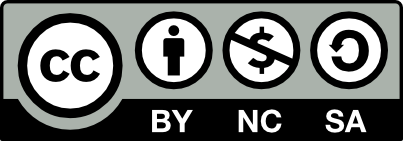Internal Unsolicited Proposal Report
Lesson Topic:
Writing a Proposal
Lesson Description:
Students will create an informal proposal which falls into the short report category for a Business Communications course.
Learning Goals/Outcomes:
Students will be able to apply six strategies to strengthen a proposal argument, and identify the topics commonly covered in the introduction, body, and close of proposals. Students will also be able to summarize the four tasks involved in completing a business proposal.
Nebraska Standards:
Business Communications:
Standard 1 Students will develop clear, concise, and effective written business communication.
Benchmark 1.1 Collect, evaluate, and organize resources to plan, develop, and prepare letters, memos, reports, and digital communication.
Sample Performance Indicator 1.1.1 Collect information to write an informal, business-related report (e.g., writing careers in business, innovative technology, ethics, diversity).
Benchmark 1.3 Compose documents using proper grammar and mechanics (e.g., number rules, spelling, capitalization, punctuation)
Sample Performance Indicator 1.3.2 Compose documents using proper grammar and mechanics.
Teacher Planning:
Equipment/Materials/Software Needed: Word Processing Software and Device for composing
Word Processing Software and Computer for composing, Internet for researching
Time Required for Lesson: If using class time, 3 - 50 Minute Periods
If using class time only, 3 - 50 minute periods
Diagram/Setup:
N/A
Technology Use:
Software:
Word Processing Software Program, LMS (optional - depending on submission options), Internet for research
Hardware:
Computer
Printer (optional - depending on submission options)
Instructional Plan:
Anticipatory Set/Pre-Activity:
Prior to this lesson, instructor will need to have taught the "Planning" of Reports and Proposals. Students should be able to already:
- Adapt the three-step writing process to reports and proposals
- Explain how to choose an organizational strategy when writing a proposal
- Understand the AIDA model for persuasive writing
For this lesson specifically, the anticipatory set would be the instructor asking the following:
- What is the general purpose of any proposal? (to persuade readers to do something, such as purchase goods or services, fund a project, or implement a program)
- As a reminder, what does the AIDA model stand for? (Gain attention, Build interest, Create desire, and Motivate action)
- Proposals are persuasive messages, but does this mean they should be done with a tone more in line with advertising? Why or why not?
Following that, the instructor should either hand out or have a copy for the student to view on the computer of an External Solicited Proposal and an Internal Unsolicited Proposal. Have the students review both copies. If the instructor wanted to disclose the information of which handout is internal vs. external they could have students evaluate and choose. Students should be able to identify the differences and then use it as a guide for their assignment.
Benefits/Explanation/Real-World Connection:
Students may need to use their imagination to put themselves in the shoes of traveling sales reps in order to craft realistic answers to the three questions of the lesson activity. They should also be sure to do some research on current tablet options, including models that have detachable keyboards and those with flip screens designed for "table top" presentations. For the third question on software, perusing business app selections on the iTunes or Google Play app stores will provide the information they need.
This is a timely topic with the advancement of technology and its usage in businesses. This will help them understand the importance of certain types of technology use as a business employee and a look at it from a managerial perspective.
Activities (i.e. instructions, warm-up, lesson, cool-down):
Instructions are all listed on the resource file also attached here: Informal Proposal Activity Instructions.
Modify to your needs as the instructor for formatting, citing of sources, length of report, etc.
Closure:
Have each student break down their report and write out how the AIDA model was applied.
Possible closure activities conducted could be: Peer review for proofreading before submitting, have each student present briefly their proposal to work on oral communication in a "work setting."
Assessment :
Assessment will be formative. Instructor can apply a writing rubric. A grading rubric has been attached here for instructor use.
The best way for students to get better at writing is to also provide a revision opportunity for them to understand and fix their mistakes.
Supplemental Information:
Modifications:
Topic can be modified to fit the needs of the class. Page requirements can change whether this is needed as a short or long report.
Safety Precautions:
N/A
Comments (adaptations for various grades/ages, teaching styles, etc.)
Instructions can vary depending on grade and/or course level.
Resources:
Instructions for assignment below:
Informal Proposal Activity Instructions
Internal Unsolicited Proposal Example Handout from Business Communication Today, 14th Edition. Bovee & Thill. Pearson. Pg. 406-409
External Solicited Proposal Example Handout from Business Communication Today, 14th Edition. Bovee & Thill. Pearson. Pg. 426-429.
Writing Rubric for Grading Purposes

"Internal Unsolicited Proposal Report" by Alyse Pflanz of University of Nebraska at Kearney | CC BY NC SA